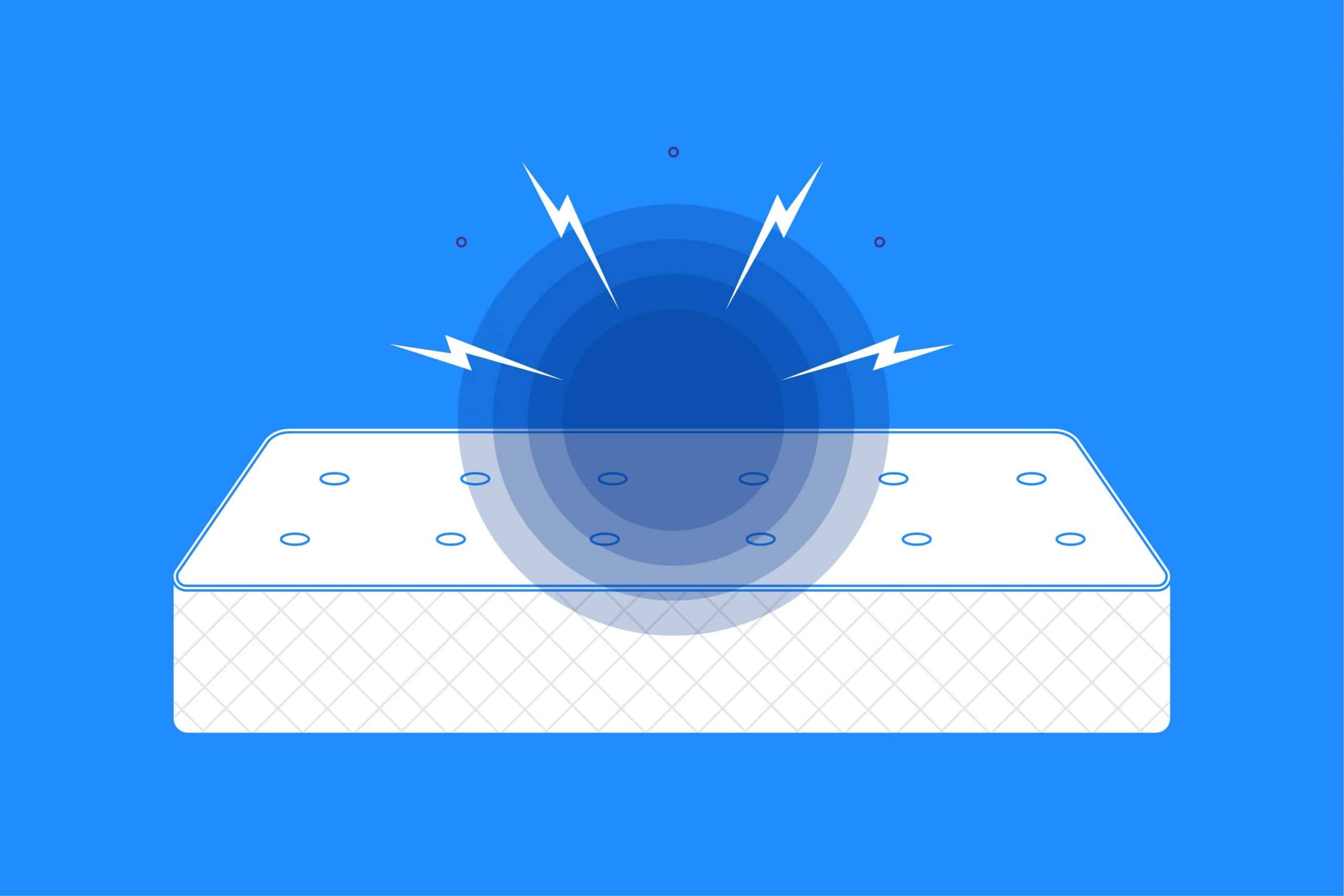Key Takeaways
- Causes and Symptoms of Intercostal Muscle Strain: Intercostal muscle strain is typically caused by repetitive or forceful motions, poor posture, or sudden movements. Symptoms include sharp rib pain, muscle tension, tenderness, difficulty breathing, and swelling.
- Sleeping Strategies for Relief: Adjust your sleep position to align your spine and protect the injured area. Consider using pillows for support, such as under your knees or between them while on your side. Avoid lying flat and prioritize rest.
- Heat and Cold Therapy: Apply cold compress or ice pack for immediate pain relief and reduced swelling. After 2-3 days, switch to heat therapy using a heating pad on low or medium setting for muscle relaxation and increased blood flow.
Are you struggling to get a good night’s sleep with intercostal muscle pain? Verified Source Cleveland Clinic Ranked #2 hospital by U.S. News & World Report and one of the largest academic medical centers in America. The Cleveland Clinic serves patients from all over the world. View source You’re not alone. This common condition, caused by tears in the muscles between your ribs, can be incredibly painful. But don’t worry; you can take steps to find some relief and promote healing.
Here are some tips on how to sleep comfortably with intercostal muscle strain, including exercises, proper positioning, and creating the perfect sleep environment.
Causes of Intercostal Muscle Strain
Repetitive, forceful motion, such as weight lifting or intense dancing, can lead to intercostal muscle strain. This strain occurs when the intercostal muscles between your ribs are pulled, twisted, or stretched too far. It can also be caused by sudden movements like bending or reaching overhead. This is also one of the ways your hydration can affect you as well as poor posture can also contribute to the risk of intercostal muscle discomfort.
When you experience intercostal muscle strain, you may feel a sharp pain in your rib area. You might also notice muscle tension and stiffness, tenderness, and soreness when touched, difficulty breathing, and swelling and inflammation in the affected area. These symptoms can make it challenging to find the best sleep position.
To manage intercostal muscle strain during sleep and promote restful sleep for the healing process, here are some helpful tips:
- Maintain a neutral sleeping posture: Sleep on your back with a pillow supporting your head and neck. Avoid sleeping on the side that hurts to prevent exacerbating the strain. Here are some pillows you should know about.
- Use pillow support: Consider using a body pillow or extra pillows to give additional support to your body while keeping a good sleep posture.
- Apply hot/cold therapy: Use a heating or cooling pad on a low or medium setting for 15 to 20 minutes before bed to relax tight muscles and relieve pain.
- Practice breathing exercises: Before bed, engage in gentle breathing exercises for the best sleep you can get as recommended by your healthcare provider to improve breathing capacity and reduce pain.
Symptoms of Intercostal Muscle Strain
Sudden movements like twisting or reaching overhead can cause intercostal muscle strain, resulting in symptoms Verified Source Mayo Clinic Ranked #1 hospital by U.S. News & World Report and one of the most trusted medical institutions in the world. The staff is committed to integrated patient care, education, and research. View source such as sharp rib pain and difficulty breathing. If you’re experiencing these symptoms, it’s important to prioritize rest and recovery to promote healing and alleviate discomfort.
Some symptoms of intercostal muscle pain include tightness of the muscle when you reach, twist, or breathe, tenderness in the rib area, and pain.
Keeping open lines of communication with your healthcare provider regarding your symptoms and any other breathing difficulties you may be experiencing while sleeping is crucial. They can give you tips on how to sleep with intercostal muscle strain and provide personalized recommendations for gentle breathing exercises or stretches to improve breathing capacity and reduce pain.
Other Conditions vs. Intercostal Muscle Strain
When differentiating between intercostal muscle strain and other conditions, it’s important to consider factors such as the location of pain, the presence of swelling, and any history of trauma or repetitive movements.
Intercostal muscle strain is characterized by localized pain in the rib area, muscle tension and stiffness, tenderness to the touch, difficulty breathing, and swelling. However, it’s crucial to rule out other conditions such as a bruised rib cage or simply muscle spasms Verified Source Cleveland Clinic Ranked #2 hospital by U.S. News & World Report and one of the largest academic medical centers in America. The Cleveland Clinic serves patients from all over the world. View source that may present with similar symptoms.
Always consult a healthcare provider for a proper diagnosis before starting any treatment plan or incorporating new techniques into your routine. They will be able to assess your specific condition and provide personalized recommendations for restorative sleep positions, Verified Source Cleveland Clinic Ranked #2 hospital by U.S. News & World Report and one of the largest academic medical centers in America. The Cleveland Clinic serves patients from all over the world. View source various pain relief remedies, management strategies, physical therapy exercises, deep breathing techniques, and heat therapy applications tailored to your needs.
Tips on How to Sleep with Intercostal Muscle Strain
When dealing with intercostal muscle issues, there are several strategies to help with how to sleep with intercostal muscle strain comfortably. First, adjust your sleep position to find one that minimizes pain and keeps your torso neutral. Also, consider the benefits of an adjustable bed or elevating your upper body to alleviate pressure on the affected area. Additionally, heat and cold therapy can relieve sore muscles before bedtime.
Sleep Position
To alleviate discomfort and promote healing, finding a sleep position that aligns the spine and protects the injured area is recommended. Here are three sleep positions that can help you rest comfortably while managing intercostal muscle strain:
- On your back with a pillow between your knees: This position helps maintain proper spinal alignment and reduces pressure on the injured muscles.
- On your side with a pillow between your knees: Placing a pillow between your knees helps keep your spine aligned and prevents unnecessary strain on the intercostal muscles.
- In a reclined position supported by pillows: Using multiple pillows or use a wedge pillow to prop yourself up at a slight incline can relieve pressure on the chest and provide support for optimal rest.
“Incorporating the right sleeping strategies is crucial for individuals with an intercostal muscle strain,” says Dr. Jordan Burns. “A study published Verified Source National Library of Medicine (NIH) World’s largest medical library, making biomedical data and information more accessible. View source in the ‘Journal of Pain Research’ in 2019 highlighted the importance of proper sleep in the healing process. Restful sleep supports tissue repair and pain reduction. Sleep positions are key; try sleeping on your back with a pillow under your knees, as it can reduce strain on the intercostal muscles.”
Keep Your Torso Neutral and Minimize External Pressure
Maintaining a neutral position Verified Source National Library of Medicine (NIH) World’s largest medical library, making biomedical data and information more accessible. View source for your torso and minimizing external pressure can help alleviate discomfort associated with an intercostal muscle strain. When you have strained muscles in your upper body, taking precautions while sleeping is important to promote rest and recovery. Here are three key strategies for reducing external pressure to keep in mind:
- Keep your torso neutral: Find a sleep position that keeps your spine aligned and avoids additional strain on the injured area. This may involve using pillows or specialized bedding to support your back and maintain proper posture.
- Minimize external pressure: Avoid placing heavy objects or excessive pressure on the chest wall during sleep. This can worsen localized pain and cause sharp pain when sudden movements occur.
- Rest and recovery: Allow yourself enough time to rest and recover from the intercostal muscle pain. Take breaks from activities that exacerbate the pain, prioritize quality sleep, and follow any treatment recommendations your healthcare provider provides.
Get Yourself a Reclining Mattress and Elevate Your Upper Body
Consider investing in enjoying the benefits of an inclined bed to elevate your upper body and support your intercostal muscle strain. This can help you sleep better and promote rest and recovery. Elevating your upper body can relieve pressure on the affected muscles, allowing them to heal more effectively.
A reclining mattress will allow you to find a comfortable position that aligns your spine and minimizes external pressure on the injured area. Additionally, using good sleep hygiene tips, such as maintaining a consistent sleep schedule and creating a healthy bedroom environment, can further enhance your recovery.
Remember to take deep breaths before bed to relax your muscles and promote relaxation. Prioritizing restful sleep is essential for healing from intercostal muscle strain.
Heat and Cold Therapy
Applying heat or cold therapy Verified Source National Library of Medicine (NIH) World’s largest medical library, making biomedical data and information more accessible. View source can be beneficial in relieving the muscle fibers and inflammation associated with intercostal muscles. Ideally, the best results are from cold therapy, then switching to heat therapy after 2-3 days if you are still feeling pain.
- Cold Compress: Apply a cold compress or ice pack wrapped in a towel to reduce swelling and numb the area. This can provide immediate pain relief and help decrease inflammation.
- Heating Pad: Use a heating pad on a low or medium setting to apply warmth to the affected area. This can help relax the muscles and increase blood circulation, promoting healing.
Practice Good Sleep Hygiene
Ensure you create a comfortable sleeping environment by maintaining a consistent sleep schedule, establishing a bedtime routine, exercising daily and avoid these bad sleep habits for a better night’s rest. When dealing with intercostal muscle pain, it’s important to prioritize rest and recovery, especially when getting a good night’s sleep.
“Quality sleep is paramount for healing intercostal muscle strain,” says Dr. Burns. “The American Academy of Sleep Medicine emphasizes Verified Source American Academy of Sleep Medicine Society focused on sleep medicine and disorders, and the AASM is who authorizes U.S. sleep medicine facilities. View source maintaining a consistent sleep schedule. This helps regulate your body’s internal clock, which is crucial for tissue recovery.”
To promote relaxation and fall asleep easier, avoid excessive shallow breathing that can exacerbate the pain. Instead, focus on slow breathing techniques Verified Source Oxford Academic Research journal published by Oxford University. View source to help calm your body and mind before bed. Take a warm bath or shower before sleep to relax your muscles and ease discomfort.
Remember that intercostal muscle strains can be painful, so creating the right sleeping environment is crucial for better sleep and supporting recovery.
“Your sleep environment matters,” says Dr. Burns. “Ensure your mattress and pillows offer adequate support. This support is vital for those with intercostal muscle strain, as it minimizes pressure on the affected area. Make use of ergonomic pillows to maintain proper spinal alignment.”
How Long It Takes for Intercostal Muscles To Heal
Rest assured, it can take anywhere from three weeks to several months for a more severe case of intercostal muscles to fully heal. However, a mild case can go away in a few days. During this time, it is crucial to prioritize rest and recovery to facilitate the healing process and prevent further injury.
It is important to keep in mind getting proper rest, careful breathing, and hot/cold treatments as you navigate through this healing period.
Pain Management and Treatment Options
When managing your intercostal muscle pain, it is important to explore various treatment options and consult a healthcare professional for personalized advice.
To manage your intercostal muscle pain while sleeping, it is crucial to keep your torso neutral to minimize discomfort. Find a sleep position that aligns your spine and protects the injured area. Use pillows or a dual comfort pillow for support, and consider placing one under your knees to reduce upper back pain. Avoid lying down flat, as this may worsen the pain.
Remember to prioritize rest and avoid activities that exacerbate the strain, such as deep breathing or sudden twists.
While these strategies may help manage milder strains, more severe strains may require additional treatments such as ultrasound therapy or transcutaneous electrical nerve stimulation Verified Source Cleveland Clinic Ranked #2 hospital by U.S. News & World Report and one of the largest academic medical centers in America. The Cleveland Clinic serves patients from all over the world. View source (TENS). It is important to seek professional medical advice for an accurate diagnosis and appropriate treatment plan tailored to your needs.
Should I see a doctor or visit the ER for Intercostal Muscle Strain?
If you are experiencing severe chest pain or difficulty breathing due to your intercostal muscle pain, seeking medical attention from a doctor or visiting the ER is important. Here’s why:
- Prompt diagnosis: A doctor can properly assess the severity of your intercostal muscle pain and rule out any other underlying conditions that may be causing your symptoms. They can also provide appropriate treatment recommendations based on your specific situation.
- Pain management: Severe pain associated with intercostal muscle pain can greatly impact your daily life and sleep quality. A doctor can prescribe pain medication, muscle relaxants, or recommend pain management techniques Verified Source Harvard Health Blog run by Harvard Medical School offering in-depth guides to better health and articles on medical breakthroughs. View source to help alleviate your discomfort and improve your overall well-being.
- Prevent complications: Intercostal muscle strains can sometimes lead to complications if left untreated or managed improperly. Seeking medical attention ensures that any potential complications, such as infection or further tissue damage, are addressed promptly.
Frequently Asked Questions
How do you sleep comfortably with intercostal muscle pain?
Your intercostal muscles can relax by having your upper body slightly elevated. Verified Source ScienceDirect One of the largest hubs for research studies and has published over 12 million different trusted resources. View source To create a slight inclination, place a pillow under your upper back and head. This can ease breathing and lessen stress on your ribcage.
Consider laying on your unaffected side if you often sleep on your side to lessen pressure on the sore muscles. To support and preserve appropriate spinal alignment, place a pillow between your legs.
How can I heal my intercostal muscles faster?
It can be frustrating to try to sleep with pain. Taking proactive steps can speed up the healing process. First of all, rest. Your body needs time to heal, and you need to avoid further strain. Other options include ice and heat packs, stretching, and breathing exercises. In particularly painful cases, physical therapy may be needed.
What makes intercostal pain worse?
Pain typically worsens when you move around or breathe deeply. Exercise makes it worse, and three to five days after you strain the muscle, the pain intensifies. It may be challenging to breathe after a muscle strain, so be sure to breathe carefully to avoid further strain.
How do you breathe with intercostal muscle strain?
Intercostal muscle tension makes breathing difficult. However, pneumonia and infection can result from simply taking short breaths as opposed to complete, deep breaths. To alleviate stress, deep breathing techniques can also be used. Every hour, try to practice breathing techniques for a few minutes.
Conclusion
If you are dealing with intercostal muscle strain, it is essential to prioritize rest and recovery. For proper guidance, inform your healthcare provider about your pain levels and sleeping difficulties.
Incorporate gentle breathing and stretching exercises to improve breathing capacity and reduce pain. Find a comfortable sleep position that supports your spine and protects the injury. Maintain good sleep hygiene by following a consistent sleep schedule Verified Source Mayo Clinic Ranked #1 hospital by U.S. News & World Report and one of the most trusted medical institutions in the world. The staff is committed to integrated patient care, education, and research. View source and creating a comfortable sleeping environment.
Remember, proper care and patience are key to healing intercostal muscle strain effectively.
About the author
Eric Ridenour is a health and wellness writer with a strong focus on sleep and nutrition. With a background in health science and psychology, Eric has a deep understanding of the connection between sleep and overall well-being. His expertise has been sought by various businesses and individuals, and his work has been featured in reputable publications such as Thrive Global, Drug Report, and Authority Magazine. Eric's commitment to promoting better sleep and comprehensive wellness is evident in his writing and consultations. He is a published author working on his second book.
View all posts





